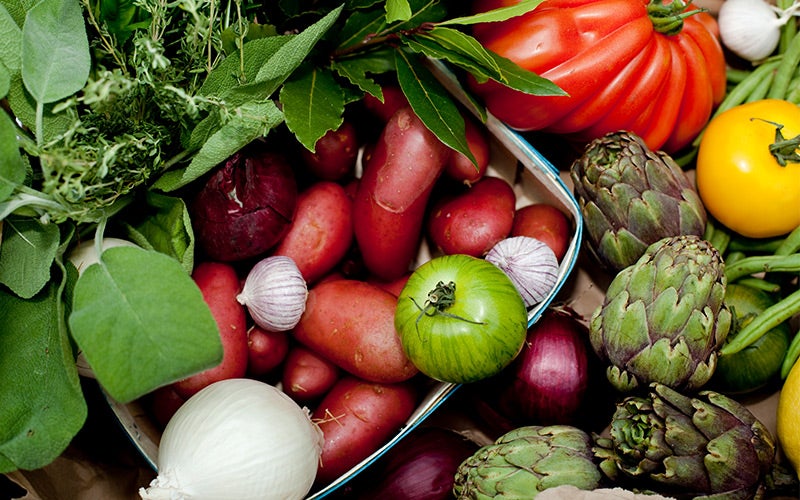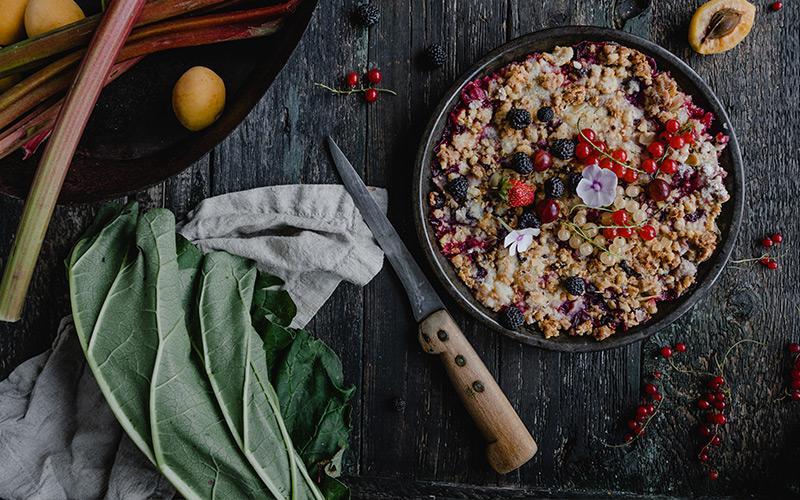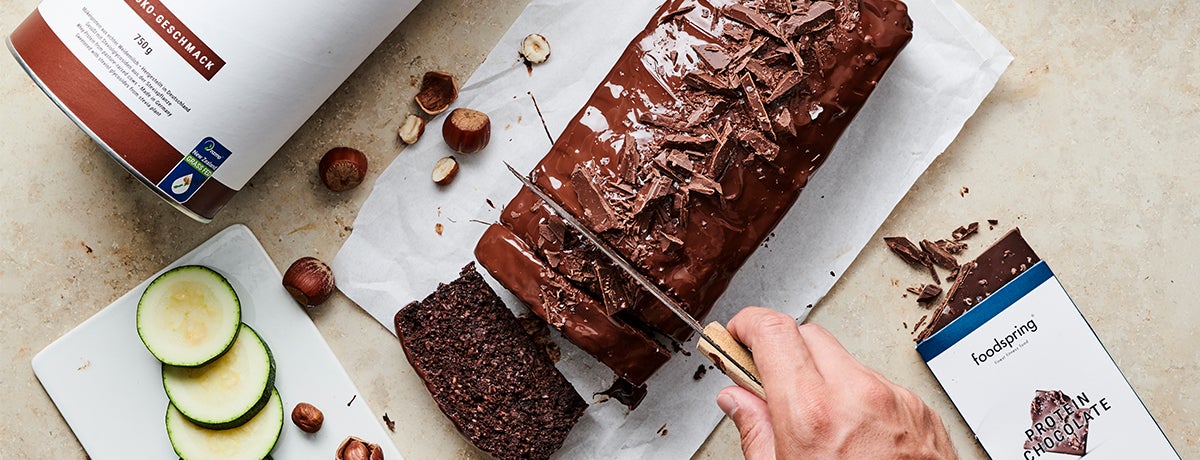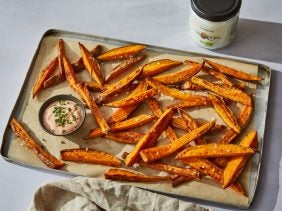Four seasons of freshness: Why you should buy fruits and vegetables in season
 ©foodspring
©foodspring
The four seasons offer plenty of opportunities for a variety of local produce. Keep reading for our quick guide to what to buy when, and the benefits of fruits and vegetables in season.
The Benefits
Seasonal fruits and vegetables ripened in a natural way have that deep flavor your tastebuds crave. If strawberries are harvested before they’re in season, they don’t develop their full flavor potential. That’s also why off-season tomatoes sometimes taste watery.
It’s also important to eat produce while it’s still fresh to minimize the effects of transport and storage time. Strawberries, for example, quickly lose their vitamin C content, fragrance, and flavor. Shorter transport routes also reduce your produce’s carbon footprint.
The price of seasonal food can also be lower than imported products like lemons. And you don’t even have to search for a farmer’s market to get your local vegetables. Many supermarkets now offer seasonal produce from farmers in the region as well.

The Downsides
Of course, strawberries taste best in season over the summer. But if you’re still craving them in February, and you want to stick to your seasonal principles, check out your dried, frozen, or preserved options.

Many fruits and vegetables can be frozen while in season, so they’re ready to use even months later. With stone fruit, like plums and apricots, make sure to remove the pits beforehand. It’s also usually better to chop large vegetables, such as butternut squash, cabbage, carrots, and sweet potatoes, into small pieces that are ready to cook.
Our tip: Measure out the spinach, strawberries, or other berries you need for your shakes before freezing! Then it’s easy to grab exactly what you need, and your healthy breakfast is ready even faster.
Four Seasons of Produce
Spring
(March 21st – June 20th)
In spring, we love indulging in a variety of leafy salads and spring vegetables like asparagus, kale, leeks, sweetheart cabbage, and spinach. New potatoes also start to appear in April. Did you know that rhubarb is technically a vegetable, even though it’s usually part of sweet dishes? Morel mushrooms are also in season in the spring, unlike most of their fellow fungi.

Summer
(June 21 – September 20)
Summer brings us the greatest variety of fruits and vegetables. In addition to a ton of vegetables in season, this is also when the berry season really gets going, with blackcurrants, raspberries, and strawberries at the beginning followed by blackberries in July. June also marks the return of the broad bean. It’s only in season for 3 months, but that’s still enough time to produce 740,000 tons in the UK each year.
Tip: For more veggies in your cakes, try our surprising flourless zucchini cake recipe featuring our Chocolate Whey Protein and stevia to save on carbs!
Fall
(September 21 – December 20)
Most of the vegetables from summer, like corn, cucumbers, spinach, tomatoes, potatoes, and kale are in season through the beginning of fall, however we do have to say goodbye to our beloved berries. But no one can stay sad for long with crisp apples to take their place!
Winter
(December 21 – March 20)
Winter isn’t exactly known for its variety of produce, but there’s brussels sprouts, winter squash, and various types of cabbage, carrots, and potatoes in season to prepare delicious stews with. And even though there’s no regional fruit in season, with a bit of preparation, you’ll have a stock of apples and preserves from the fall. And maybe you can even treat yourself to some greenhouse-grown citrus fruits.
Fun facts about fruits and vegetables in season
- The average German eats 58 kg of potatoes every year!
- Rhubarb is a vegetable, and has only 21 kcal per 100g.
- Berries have 20% more vitamin C if they’re only picked when fully ripe.
Our Conclusion
- Shopping seasonally is better for your health because fresh produce has more vitamins. It’s also better for the environment and supports your local economy.
- Summer and fall have the most variety on the fruits and vegetable front.
- Some produce can also be frozen or preserved and then eaten in spring and winter.
- Our seasonal calendar below gives you an overview of what you can get in your region right now.
Calendar: Fruits and Vegetables in Season
SPRING
(March 21 – June 20)
VEGETABLES
ASPARAGUS
BANANA PEPPERS
BROAD BEANS
BROCCOLI
CARROTS
CAULIFLOWER
CHARD
CHICORY
CUCUMBER
ENDIVES
FENNEL
(WILD) GARLIC
HEAD LETTUCE
ICEBERG LETTUCE
KOHLRABI
PEAS
POINTED CABBAGE
POTATOES
RADISHES
RED CABBAGE
RHUBARB
ROCKET (ARUGULA)
SAVOY CABBAGE
SPINACH
SPRING ONIONS
SUGAR SNAP PEAS
TURNIPS
WHITE CABBAGE
ZUCCHINI
FRUITS
BLUEBERRIES
CHERRIES
RASPBERRIES
REDCURRANTS
STRAWBERRIES
SUMMER
(June 21 – September 20)
VEGETABLES
ARTICHOKES
AUBERGINES (EGGPLANTS)
BEANS
BEETROOT
BELL PEPPERS
BROCCOLI
CARROTS
CAULIFLOWER
CELERY
CHARD
CUCUMBER
ENDIVES
FENNEL
GREEN BEANS
HEAD LETTUCE
ICEBERG LETTUCE
KOHLRABI
LEEKS
ONIONS
PEAS
POTATOES
RADICCHIO
RADISHES
RED CABBAGE
ROCKET (ARUGULA)
RUTABAGA
SAVOY CABBAGE
SPINACH
SPRING ONIONS
SUMMER SQUASH
SUGAR SNAP PEAS
SWEET CORN
TOMATOES
TURNIPS
WHITE CABBAGE
WHITE RADISHES
ZUCCHINI (COURGETTE)
FRUITS
APPLES
APRICOTS
BLACKBERRIES
BLUEBERRIES
CHERRIES
DAMSON PLUMS
GRAPES
MIRABELLES
PEARS
PLUMS
QUINCE
RASPBERRIES
REDCURRANTS
STRAWBERRIES
AUTUMN
(September 21 – December 20)
VEGETABLES
ARTICHOKES
AUBERGINES (EGGPLANTS)
BEETROOT
BELL PEPPERS
BLACK RADISHES
BROCCOLI
BRUSSELS SPROUTS
CAULIFLOWER
CELERY
CHARD
ENDIVES
FENNEL
GREEN BEANS
HEAD LETTUCE
ICEBERG LETTUCE
JERUSALEM ARTICHOKE
KALE
KOHLRABI
LAMB’S LETTUCE
LEEKS
ONIONS
PARSNIPS
POTATOES
PUMPKINS/SQUASH
RADICCHIO
RADISHES
RED CABBAGE
ROCKET (ARUGULA)
RUTABAGA
SALSIFY
SAVOY CABBAGE
SPINACH
SWEET CORN
WHITE RADISHES
WHITE CABBAGE
FRUITS
APPLES
CHESTNUTS
DAMSON PLUMS
PEARS
QUINCE
WINTER
(December 21 – March 20)
VEGETABLES
BLACK RADISHES
BRUSSELS SPROUTS
CHICORY
JERUSALEM ARTICHOKES
LAMB’S LETTUCE
LEEKS
KALE
PARSNIPS
SALSIFY
SAVOY CABBAGE
SPINACH
FRUIT
APPLES AND PEARS FROM COLD STORAGE
Sources for this article
We at foodspring use only high-quality sources, including peer-reviewed studies, to support the facts within our articles. Read our editorial policy to learn more about how we fact-check and keep our content accurate, reliable, and trustworthy.






























